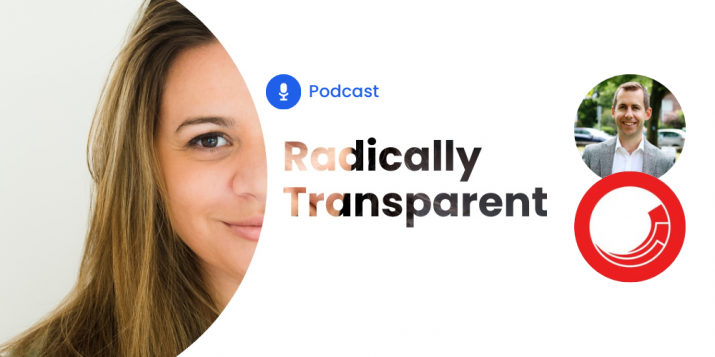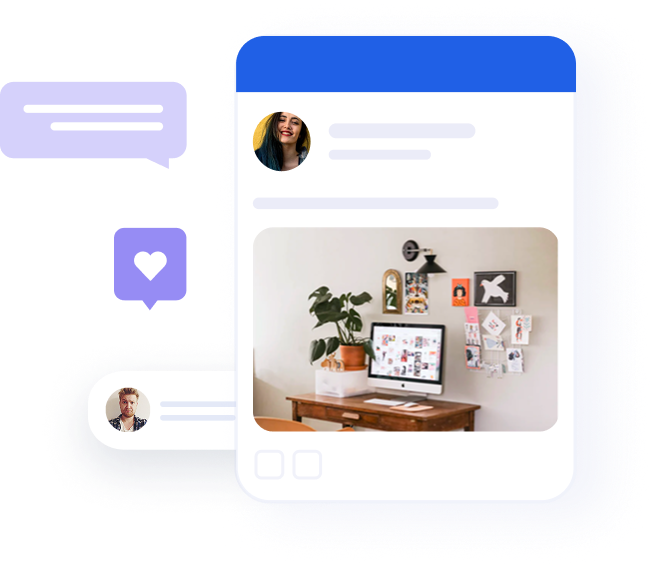8 ways to encourage employees to share your content on social media
Table of contents
- 1. Recognition is the name of the game
- 2. Incentivize your employees and gamify your advocacy program
- 3. Tailor the advocacy program to employees’ needs
- 4. Get employees invested in the advocacy program
- 5. Lead by example
- 6. Adopt a platform that would make it effortless to share and easy to personalize
- 7. Educate and share knowledge
- 8. Demonstrate to employees what’s in it for them
- Supercharge your employee advocacy program
So you’ve done a great job launching your employee advocacy program. You’ve established your goals, gained the buy-in of both employees and management—and successfully completed your pilot program. However, once the initial excitement fades, you notice that employees aren’t sharing as much as before.
So how do you encourage employees to share your content on social media?
We’re here to list all the ways to preserve the momentum in your employee advocacy program.
1. Recognition is the name of the game
We all want to feel that our managers recognize and value our efforts. Employee advocacy is no exception. So, before you turn to tangible incentives—which can be very effective, no doubt—make sure that employees know their advocacy efforts are noticed and appreciated.
There are multiple ways to do that. You can highlight this week’s or month’s top advocates in an email newsletter and showcase their success stories. It can be a personal email from their manager thanking them for their effort.

You can even ask your top advocate to present their social media strategy to other employees in advocacy-dedicated roundtables or training sessions. Every form of recognition will do wonders and encourage employees to share your content on social media.
2. Incentivize your employees and gamify your advocacy program
Recognition is definitely a key element in encouraging employees to share your content on social media. However, combining recognition with tangible incentives can also go a long way in boosting content sharing.
The incentives don’t have to be on a grand scale. It can be an Amazon voucher, a pair of movie tickets, or an extra vacation day for top employee advocates. One of our clients actually used cupcakes to incentivize its employees to share.
Gamification also plays a major role here. Leaderboards can help get employees excited about advocacy and motivate them to become top advocates. Determine your success metrics in advance— for B2B brands, these will most likely be clicks and conversions.
Based on those metrics, you can turn advocacy into a contest, sending out weekly updates on the leading advocates.
Recommended for further reading
3. Tailor the advocacy program to employees’ needs
It’s a simple formula: if the content does not resonate with your co-workers, they won’t share it.
Employees are looking for content they could share about their company and their work, and they know which content would be compelling for their networks. This is why advocacy is all about creating a unique, personal voice on social media, and not just echoing the brand’s content.
To ensure that you’re creating content employees would want to share, ask yourself whether it provides value to them and their audiences. You can even do a survey to uncover their content preferences.
Once you’ve determined your content strategy, analytics will help you measure its success. If employees aren’t sharing specific types of content, move away from those kinds of articles and seek more engaging topics and formats.
Another way to personalize an advocacy program is by segmenting content by topics. Product managers might be more interested in sharing content on a cool new feature they helped launch, while HR would be more inclined to post a press release about a great new hire for the company.
Advocates will turn away from the program when faced with volumes of content to which they won’t necessarily be able to relate. By segmenting content by topics, you’ll make it easier for each employee to discover the content they find to be the most engaging and take part in the program.

4. Get employees invested in the advocacy program
One of the best ways to encourage employees to share your content on social media is by investing in your advocacy program. How? Show them how much they’re contributing to the program’s success.
There are several ways to do this. One is to provide employees with post-level analytics, which will show them how each post performed. It will reveal how many likes, comments, and shares it garnered and, most importantly, how many clicks and conversions it generated.
Once employees have data demonstrating their impact on the company’s bottom line, this will motivate them to share more content and achieve even better results.
Another great way to engage employees is to allow them to suggest content. Oktopost’s employee advocacy platform recently launched a Content Suggestions feature that allows advocates to add content to the board, pending approval from the program admin.
Employees know their audience best, so it’s natural that they contribute articles to the advocacy board.
They don’t expect every suggestion to be approved. However, the ability to recommend content and actually see some of it on the board will give them a sense of partnership in the program.
5. Lead by example
The leadership in your organization is key to the success of your employee advocacy program. Your co-workers often look up to the management and follow their example. This makes the practice of leading by example more relevant than ever.
To encourage employees to share your content, ensure that the C-level management is on social media, advocating for the company. This is the time to provide proper training to those managers and sustain their advocacy efforts over time. You can work closely with the executives’ staff to establish a social media strategy for them and ensure that the sharing is consistent.
Once your colleagues learn that management is participating in the employee advocacy program, they’d be happy to follow suit and share more content.
6. Adopt a platform that would make it effortless to share and easy to personalize
Your employee advocacy platform can make or break your advocacy program.
Ease of use is a major factor in the adoption of new technology. Your best choice would be a platform that makes it effortless for your colleagues to discover and share content. A mobile app that allows you to share content on the go is also essential.
This platform should also allow employees to personalize their posts. Advanced scheduling and geotagging features or in-depth analytics can show them which content performs best. Personalization features will encourage employees to establish their own voice on social media and share more content.
7. Educate and share knowledge
Social media can be daunting for those who are unfamiliar with it. With immense amounts of content, instantaneous interaction with other people, and icons and buttons galore, a social media novice can feel overwhelmed.
You have probably conducted training sessions and familiarized employees with the platform and social media best practices to onboard your employees to employee advocacy.
But the education process shouldn’t stop there. Encourage knowledge sharing by having monthly or quarterly roundtables, where advocates can discuss their experience with the program and educate each other on best practices. Learning from their peers’ experience will go a long way in boosting content sharing.
8. Demonstrate to employees what’s in it for them
One reason employees may have stopped sharing your content is that they don’t understand how they could benefit from it.
Explaining and demonstrating to employees the benefits of advocacy for them is a major factor in your program’s success. With advocacy, employees can turn into social media thought-leaders and expand their professional networks.
This spells significant career growth for advocates. Unsurprisingly, almost 86% of employee advocates cite the increased social presence as having a positive impact on their career.
Once employees understand how advocacy benefits their careers, they will be motivated to engage and share more content.
Supercharge your employee advocacy program
Employees are valuable partners when it comes to ensuring the success of your advocacy program. Forget valuable; without them, there is no advocacy program. So, making them feel recognized, incentivizing them through tangible rewards, or demonstrating the benefits of advocacy for them are all effective ways to encourage employees to share your content and make your program a success.
Your employee advocacy platform also plays a major role in the success of your program. To supercharge your employee advocacy program, check out Oktopost’s social employee advocacy platform, with its post-level analytics, on-the-go sharing, content suggestions functionality, and much more!

![How to use a social media response template [Free Download]](https://www.oktopost.com/blog/wp-content/uploads/2021/08/cdc-n3mn7IgtwS4-unsplash-535x357.jpg)


